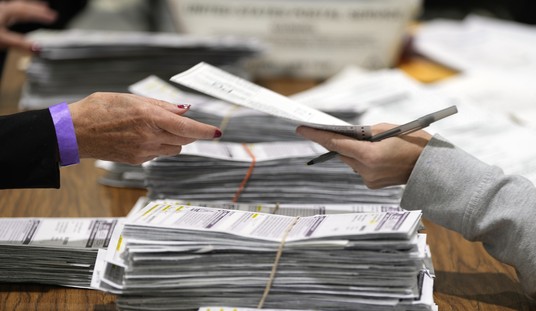Some good has come of the tragedy in Tucson. President Obama has issued a de facto rebuke to those in his camp who attempted to use the murders to discredit and smear their political opponents. It was no more than decency for the president to rise above that extremely low threshold -- but rise he did and for that he deserves credit.
But a call to high-mindedness such as the president issued is, in the nature of things, not likely to be effective for very long. If any lasting good is to be achieved out of this horrible episode, it will require addressing the question that Obama mentioned only glancingly, but that really is the heart of the matter -- mental illness.
Dr. E. Fuller Torrey, writing with a rare combination of compassion for the mentally ill and concern for the general public, has analyzed the failure of our system for dealing with mental illness in "The Insanity Offense: How America's Failure to Treat the Seriously Mentally Ill Endangers Its Citizens." Anyone who is serious about preventing the next Tucson massacre should read this book.
In 1955, when the U.S. population stood at 164 million, 558,000 people were living in mental institutions. Over the course of the next 30 years, nearly all would be released as deinstitutionalization swept the nation. The mental hospitals were closed, leaving former residents to make do on the streets and (increasingly) in the prisons. Today, roughly 4 million Americans suffer from serious mental illnesses and about 1 percent of them, 40,000 individuals, are violent.
Deinstitutionalization began not as a money-saving measure (though it doubtless appealed to some for that reason) but as an idea. Psychiatrists like Thomas Szasz ("The Myth of Mental Illness") and sociologists like Erving Goffman ("Asylums") argued that symptoms of mental illness like raving, hearing voices, and paranoia were actually responses to being institutionalized. Asylums, claimed lawyer Bruce Ennis, were places "where sick people get sicker and sane people go mad." Szasz even denied that mental illness was real, preferring to see inmates as nonconformists.
Recommended
Such were the '60s. At this moment of reduced partisanship -- if we really are in such a moment -- perhaps Democrats and Republicans can summon the humility to recognize that this disaster was a bipartisan one. Politicians of both parties agreed that subjecting people to psychiatric treatment against their will was immoral and un-American. And so a flood of deeply impaired human beings was loosed on American society. Numerous studies have found that about one-third of homeless men and two-thirds of homeless women have serious mental illnesses. Among the "hardcore homeless" or "permanent street dwellers," close to 100 percent are mentally ill.
On the streets, the homeless have been granted the freedom to be assaulted, to "sleep under bridges," as Anatole France once mocked in another context, to freeze to death, to be robbed and raped, to be lit on fire, and killed. They rummage through trash bins for food and park their filthy shopping carts under highways.
Autonomy and individual liberty are cherished ideals -- achievements of Western civilization. But there can be no true autonomy for those with unsound minds. To insist upon the right of the mentally ill to refuse treatment is cruelty masquerading as respect.
Most mentally ill people are not violent, but among the mentally impaired we do find 40,000 or so deeply disturbed and dangerous psychotics -- out of whose ranks we have gotten the mass killers of the past 50 years -- from Son of Sam to Seung-Hui Cho (Virginia Tech) and sadly, too many more to list.
A study of "rampage killers in the United States reported a 46 percent increase in such tragedies in 1990-97 compared with 1976-89." Most of those who suffer violence at the hands of the dangerously psychotic are not strangers but family members of the ill. Tragically, those family members have often pleaded for help only to be told that nothing could be done until the ill person committed violence -- by which time, of course, it was often too late.
Workable alternatives are available. Torrey recommends a national database that would track the most problematic patients, alerting emergency-room physicians and gun sellers. Programs to force compliance with treatment by withholding SSI payments, for example, or on pain of imprisonment, have been effective. Torrey's book overflows with common sense reforms.
The best that we could do to honor the memories of Christina Taylor Green and the other Tucson victims would be to address our shameful and disastrous mental health policies.

























Join the conversation as a VIP Member